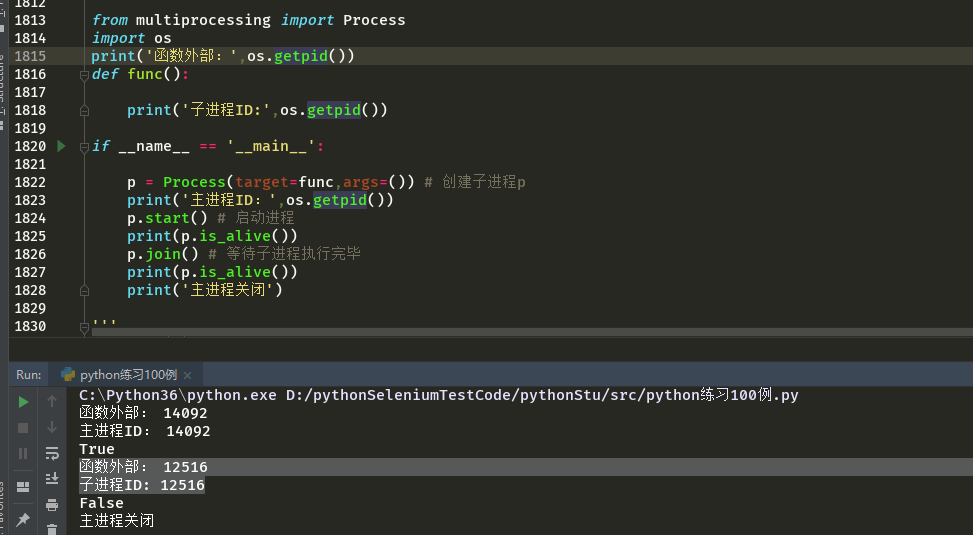
windows在启动子进程的时候会将主进程文件倒入到子进程中。导入模块就相当于执行这个模块中的代码,
所以第一个print会在主进程中执行一次,又在被导入的过程中在子进程中又执行了一次。
p.start()过程中会调用一次当前模块
注意:在windows中Process()必须放到# if __name__ == '__main__':下
Since Windows has no fork, the multiprocessing module starts a new Python process and imports the calling module.
If Process() gets called upon import, then this sets off an infinite succession of new processes (or until your machine runs out of resources).
This is the reason for hiding calls to Process() inside
if __name__ == "__main__"
since statements inside this if-statement will not get called upon import.
由于Windows没有fork,多处理模块启动一个新的Python进程并导入调用模块。
如果在导入时调用Process(),那么这将启动无限继承的新进程(或直到机器耗尽资源)。
这是隐藏对Process()内部调用的原,使用if __name__ == “__main __”,这个if语句中的语句将不会在导入时被调用。
Since Windows has no fork, the multiprocessing module starts a new Python process and imports the calling module. If Process() gets called upon import, then this sets off an infinite succession of new processes (or until your machine runs out of resources). This is the reason for hiding calls to Process() inside if __name__ == "__main__" since statements inside this if-statement will not get called upon import. 由于Windows没有fork,多处理模块启动一个新的Python进程并导入调用模块。 如果在导入时调用Process(),那么这将启动无限继承的新进程(或直到机器耗尽资源)。 这是隐藏对Process()内部调用的原,使用if __name__ == “__main __”,这个if语句中的语句将不会在导入时被调用。
